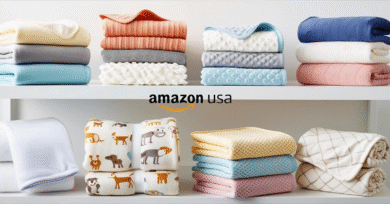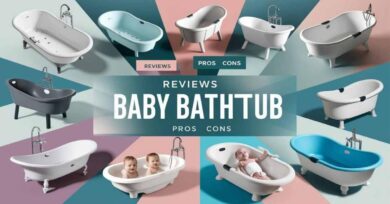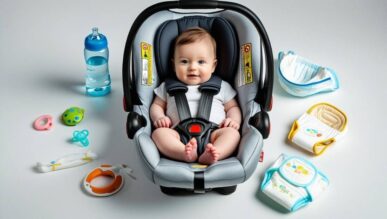
Breastfeeding is a vital part of infant care, offering unmatched nutritional and emotional benefits. However, the demands of modern life often require flexibility, making breast pumps indispensable tools for nursing mothers. Whether returning to work, managing low milk supply, or seeking shared feeding responsibilities, a reliable breast pump can empower mothers to maintain their breastfeeding journey. The market offers a diverse range of options, from manual to electric, wearable to stationary, each catering to different lifestyles and needs. Key factors to consider include efficiency, comfort, portability, noise levels, ease of cleaning, and budget.
1. Medela Pump in Style Advanced
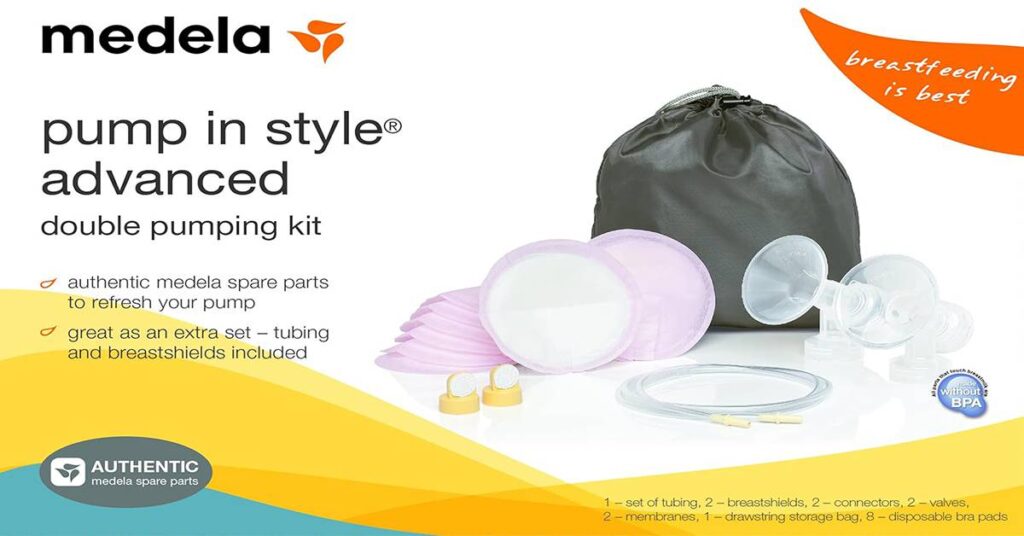
The Medela Pump in Style Advanced Double Pumping Kit is a hospital-grade electric breast pump designed for mothers who pump multiple times daily, whether returning to work, managing milk supply, or seeking convenience. Known for its 2-Phase Expression® technology, it mimics a baby’s natural nursing rhythm to stimulate let-down and efficiently express milk. The pump integrates into a portable tote bag, offering a built-in motor, battery pack compatibility, and a cooler system for on-the-go use. It includes essential accessories like breast shields, connectors, bottles, and an accessory bag, making it a comprehensive solution for frequent pumping.
Pros:
- Efficient Milk Expression: The 2-Phase Expression® technology ensures quick let-down stimulation and efficient milk extraction, reducing session times while maintaining output. Testers noted it produces a “large volume of milk in a good amount of time”.
- Portability & Convenience: The built-in tote bag houses the pump, tubing, bottles, and a removable cooler with an ice pack. Battery operation (8 AA batteries) allows cordless pumping, ideal for travel or workplace use.
- Closed System Hygiene: Prevents milk backflow into tubing, reducing contamination risks. The BPA-free design ensures safety for both mother and baby.
Cons:
- Noise Levels: Louder than competitors like Spectra S1, which may disrupt nighttime pumping or require privacy in shared spaces.
- Condensation in Tubing: Frequent use leads to moisture buildup, necessitating regular tube replacements to prevent mold. Though affordable ($10/set), this adds long-term maintenance.
- Battery Dependency: Requires 8 AA batteries (not included) for cordless use, which can be costly compared to rechargeable models like Spectra S1.
- Part Durability: Valves and membranes wear out quickly with daily use, requiring frequent replacements. Some users reported supply drops due to faulty valves.
2. Spectra S1 Plus
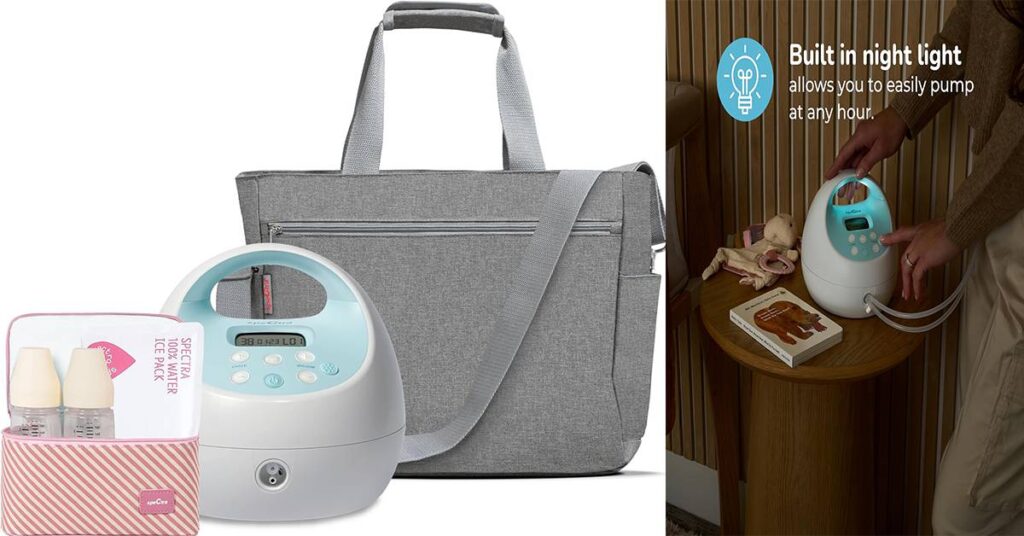
The Spectra S1 Plus is a hospital-grade, double electric breast pump designed for comfort, efficiency, and portability. Known for its Natural Nursing Technology™, it mimics a baby’s natural suckling rhythm with gentle vibration and adjustable suction (up to 270–300 mmHg), making it ideal for exclusive pumpers or mothers managing low milk supplyIts rechargeable battery offers up to 3 hours of cordless operation, while the closed-system design ensures hygiene by preventing milk backflow. The pump includes a tote bag, bottles, and cooler, enhancing its portability for on-the-go use. Quiet operation (under 45 dB) and a built-in nightlight make it discreet for nighttime or office pumping.
Pros:
- Hospital-Grade Efficiency: Delivers powerful yet comfortable suction with 12 adjustable levels and 5 cycle speeds, optimizing milk expression and mimicking natural nursing. Testers reported faster let-downs and thorough breast emptying, even for mothers of twins or preemies.
- Portability & Battery Life: Rechargeable battery allows 3 hours of use, ideal for travel or multitasking. The included tote bag and cooler simplify storage and transport
- Hygienic Closed System: Backflow protectors prevent milk contamination, and BPA-free parts are easy to clean Customizable Comfort: Features vibration during suction to reduce discomfort, multiple flange sizes (20–32 mm), and independent control of suction strength and cycle speed
Cons:
- Bulkier Design: At 3 lbs and 7.9″ x 7.9″ dimensions, it’s less compact than modern wearables like Elvie or Willow
- Battery Drain with Nightlight: Using the nightlight reduces battery life, requiring frequent recharges
- Starts in Expression Mode: Users must manually switch to massage mode each session, which can be inconvenient
- imited Flange Sizes: Standard 24mm and 28mm flanges are included, but smaller sizes (e.g., 20mm) must be purchased separately
- No App Integration: Lacks tracking features for milk volume or session history, unlike tech-forward competitors
3. Willow Go Wearable Breast Pump
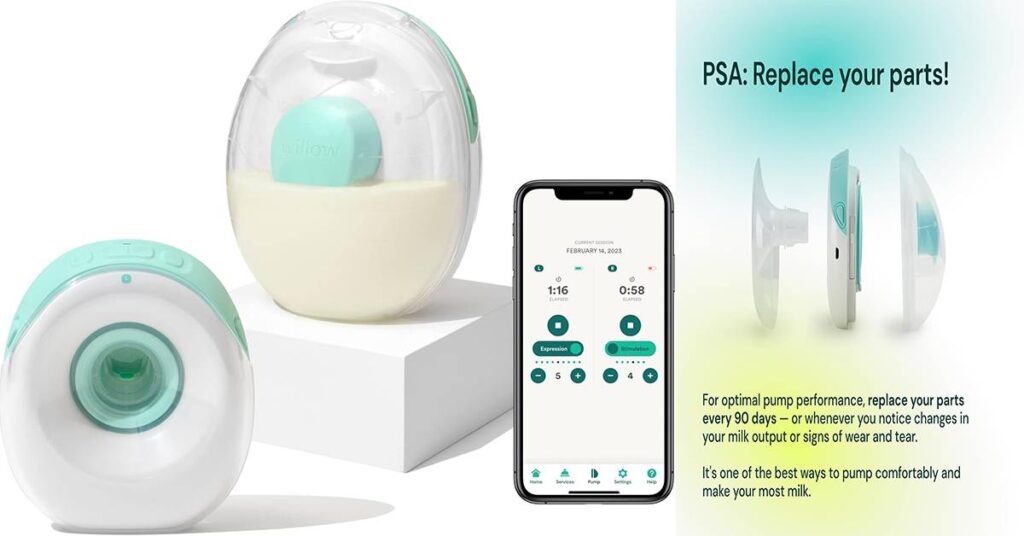
The Willow Go is a hands-free, cordless wearable breast pump designed for modern mothers seeking mobility and discretion. Featuring hospital-grade suction strength (up to -280 mmHg) and 9 adjustable suction levels, it balances efficiency with comfort, ideal for on-the-go pumping . Its compact, in-bra design eliminates external motors, tubes, or dangling bottles, allowing users to pump discreetly while multitasking . The pump includes app connectivity for real-time control, output tracking, and access to expert lactation content, enhancing user convenience . Compatible with reusable containers (5 oz or 7 oz) and spill-proof bags, it offers flexibility for different lifestyles, though additional accessories come at extra cost.
Pros:
- Hospital-Grade Efficiency: Delivers strong, customizable suction (9 levels) comparable to clinical pumps, ensuring effective milk expression while maintaining comfort.
- Portability & Discretion: Fully cordless and in-bra design enables pumping during activities like driving, working, or chores without visible tubing or noise disruption (operates under 45 dB)
- Smart App Integration: The Willow app allows remote control of suction settings, session tracking, and access to lactation resources, streamlining the pumping routine
Cons:
- Bulk and Weight: At 5 ounces per pump, it’s heavier than alternatives like Elvie, causing discomfort for some users and requiring snug bras to prevent slippage.
- Battery Limitations: Lasts only 3 sessions per charge, necessitating frequent recharging, and cannot be used while plugged in
- Learning Curve: Assembly and nipple alignment can be challenging initially, with some users reporting difficulty achieving optimal suction without leaks
4. Elvie Pump
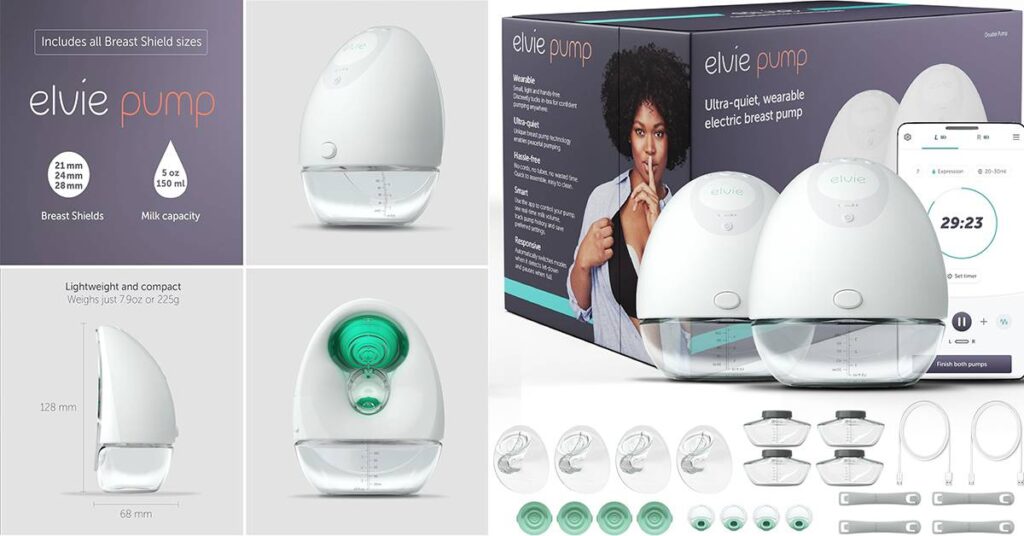
The Elvie Double Wearable Breast Pump is a premium, hands-free pump designed for modern mothers prioritizing discretion and mobility. Marketed as the smallest and quietest wearable pump, it fits seamlessly into a nursing bra, allowing users to pump while multitasking, working, or socializing without visible tubes or noise disruption. Its app integration enables remote control of suction levels (7 adjustable settings) and tracks milk output, though accuracy issues are noted . The pump includes four personalized modes (e.g., SmartRhythm for automated letdown management) and three sets of breast shields (21mm, 24mm, 28mm) for customizable comfort . While praised for portability and design, its high cost and maintenance demands polarize users.
Pros:
- Unmatched Discretion and Quiet Operation:
The Elvie is lauded as the quietest wearable pump (under 45 dB), making it ideal for public or office use. Its low-profile design fits snugly in bras, avoiding the “dairy cow” aesthetic of traditional pumps - App-Connected Customization:
The Elvie app allows remote control of suction strength, session tracking, and access to lactation resources. Users can adjust settings mid-pump and log output, though manual corrections are often needed due to inaccurate volume estimates
Cons:
- High Cost and Limited Durability:
At $549.99 (double pump), the Elvie is one of the priciest options. Users report mold in motors and part corrosion over time, making it a short-term investment - Inaccurate App Tracking:
The app’s milk volume estimates are frequently 1–3 oz off, frustrating users with low supply. Manual corrections are required for accurate logging - Battery and Maintenance Demands:
While charging takes 2 hours, suction strength drops after 2–3 sessions, requiring frequent recharges. Cleaning 6–10 parts daily adds to postpartum workload
5. Haakaa Silicone Manual Pump
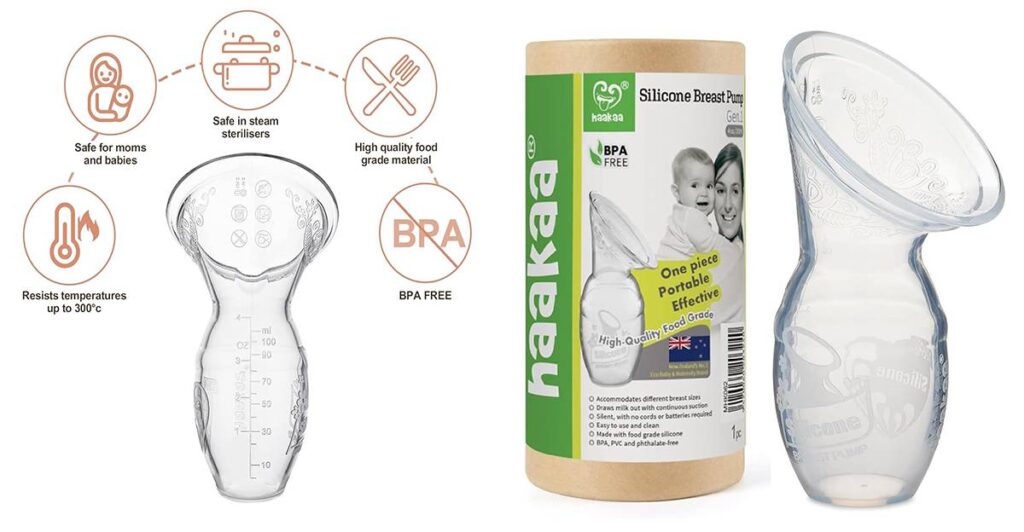
The Haakaa Silicone Manual Pump is a revolutionary, single-piece breast pump designed to simplify milk collection during breastfeeding. Made from 100% food-grade silicone, it uses natural suction to gently draw milk without cords, batteries, or complex parts, making it ideal for on-the-go use . Popular among nursing mothers, it is especially valued for catching “letdown” milk from the non-nursing breast, preventing waste and helping build a freezer stash effortlessly . Affordable and eco-friendly, the Haakaa is praised for its simplicity, portability, and versatility in addressing engorgement or strong letdowns . However, its passive suction mechanism and open design also come with considerations, such as spill risks and potential impacts on milk supply
Pros:
- Cost-Effective & Eco-Friendly: At $10–30, it is budget-friendly and made from recyclable, non-toxic silicone, reducing plastic waste .
- Ease of Use: Hands-free operation allows milk collection while nursing, with no learning curve or mechanical parts .
- Milk Preservation: Captures up to 4 ounces per session that would otherwise leak, aiding in building a freezer stash without active pumping
Cons:
- Oversupply Risks: Frequent use can signal the body to overproduce milk, leading to engorgement, mastitis, or forceful letdowns that overwhelm the baby.
- Spillage & Instability: The open design and suction reliance make it prone to spills if knocked over or detached, especially with active babies.
- Limited Efficiency: Collects mostly foremilk (lower in fat) and cannot fully empty breasts, making it unsuitable for replacing electric pumps for regular or exclusive pumping .
6. Philips Avent Double Electric Pump

The Philips Avent Double Electric Pump is a versatile, hospital-grade breast pump designed to combine efficiency with comfort. Leveraging Natural Motion Technology, it mimics a baby’s natural suckling and massage motions to stimulate quick letdown and milk flow, making it ideal for busy parents . Its adaptive silicone cushion gently conforms to breast shape and size, reducing discomfort during extended pumping sessions . The pump features a closed-system design to prevent milk from entering tubing, ensuring hygienic use and easy cleaning . With a rechargeable battery, compact travel bag, and pumping belt, it supports on-the-go expression without compromising power . Additionally, it offers customization with 8 stimulation and 16 expression levels, catering to individual preferences while retaining memory settings for consistency
Pros:
- Comfort & Adaptability: The soft silicone cushion and upright pumping design minimize discomfort and back strain, with clinical trials showing 95% of users found the position comfortable.
- Portability & Convenience: Includes a rechargeable battery (lasting up to 3 sessions) and travel accessories, enabling discreet pumping anywhere .
- Hygienic Closed System: Prevents milk contamination in tubing, reducing bacterial growth risks
Cons:
- Complex Assembly & Cleaning: Multiple small parts make initial setup and post-use cleaning time-consuming .
- Noise Levels: Louder when used as a single pump, potentially disrupting quiet environments.
- Bottle Compatibility: Only works with Avent’s wide-neck bottles, limiting storage options unless adapters are purchased .
- Higher Price Point: Priced above competitors like Medela Swing or Tommee Tippee, which may deter budget-conscious buyers
7. Lansinoh Smartpump Double Electric
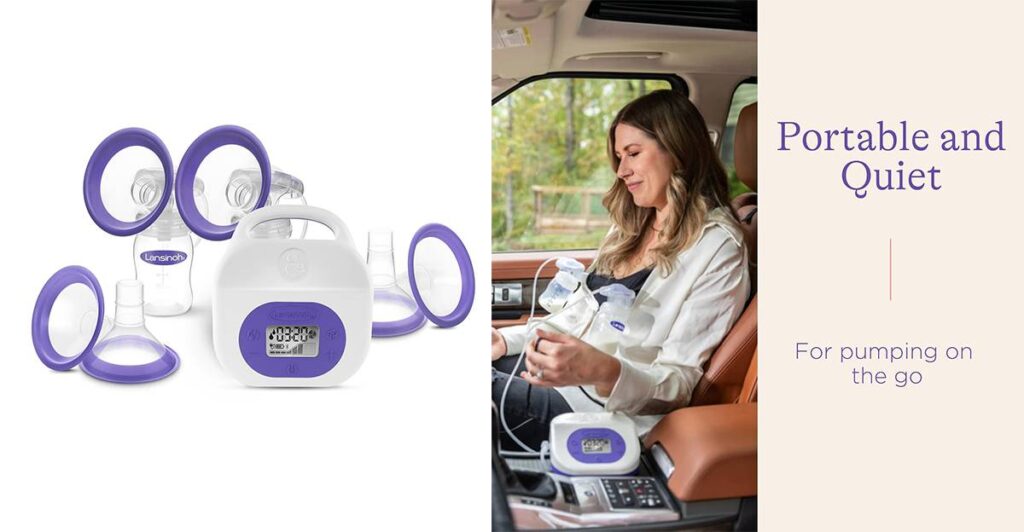
The Lansinoh Smartpump Double Electric is a versatile, tech-integrated breast pump designed for modern breastfeeding parents. Combining hospital-strength suction (up to 250 mmHg) with Bluetooth connectivity, it syncs with the Lansinoh Baby app to track pumping sessions, milk volume, and feeding patterns . Its closed-system design ensures hygiene by preventing milk from entering tubing, reducing contamination risks . Available in models like the Smartpump 2.0 and 3.0, it offers portability via rechargeable batteries (3.0) or AA batteries (2.0), catering to on-the-go lifestyles. The pump includes multiple ComfortFit flange sizes for personalized comfort and efficient milk extraction, addressing common fit issues . Ideal for frequent use, it balances power, convenience, and smart features to simplify breastfeeding routines.
Pros:
- Portability & Flexibility: The Smartpump 3.0’s rechargeable battery allows cordless pumping for up to 3 hours, while the 2.0 supports AA batteries for mobility .
- Smart Integration: Bluetooth connectivity with the Lansinoh Baby app enables session tracking and customized settings, though some users report app glitches .
- Comfort & Hygiene: Includes multiple flange sizes (21mm–36mm) and a closed-system design to prevent milk contamination
Cons:
- App Limitations: Connectivity issues and clunky app functionality may frustrate users reliant on tracking features .
- Battery Constraints: The 3.0’s 3-hour battery life requires frequent recharging for heavy users, while the 2.0 lacks a built-in rechargeable option .
- Higher Cost: Priced above competitors like the Signature Pro, with the 3.0 retailing around $199.99
8. Motif Luna Double Electric Pump
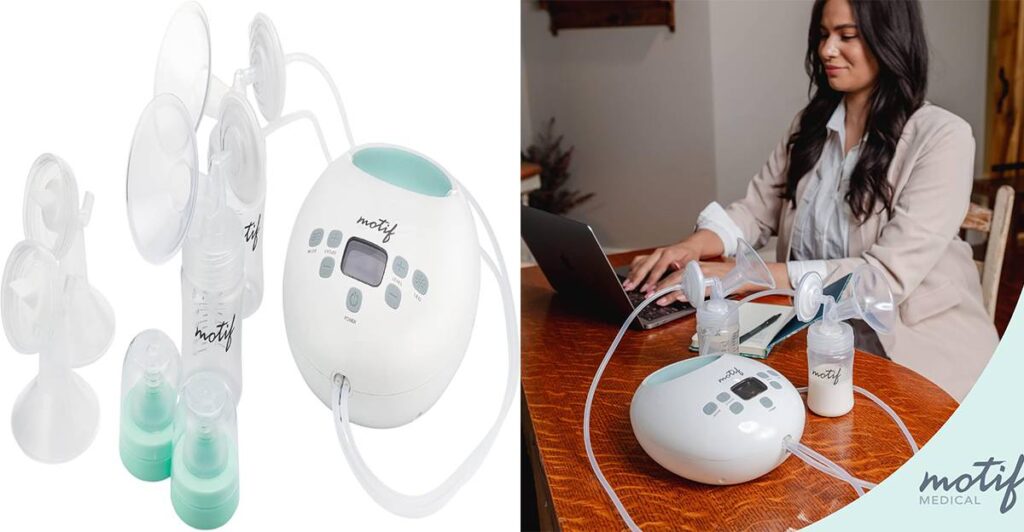
The Motif Luna Double Electric Pump is a hospital-grade breast pump designed for efficiency and comfort, ideal for busy or exclusive-pumping parents. Combining powerful suction (up to 250 mmHg) with customizable speed and vacuum settings, it mimics a baby’s natural nursing rhythm to optimize milk flow and reduce session times . Its closed-system design ensures hygiene by preventing milk contamination in tubing, while a rechargeable battery (optional) and lightweight build (2 lbs) enhance portability . The pump features a quiet motor (~45 dB) and a built-in LED night light, making it suitable for discreet nighttime use . Compatible with insurance and praised for affordability, the Luna also includes multiple flange sizes and intuitive controls, streamlining the pumping experience
Pros:
- Powerful & Efficient: Delivers hospital-grade suction, enabling faster milk expression (some users report 4 ounces in 3 minutes) .
- Customizable Comfort: Adjustable vacuum strength (1–12 levels) and cycle speed (30–70 cycles/minute) cater to individual preferences, reducing discomfort .
- Portability & Convenience: Rechargeable battery option allows cordless use for up to 2.5 hours, ideal for on-the-go mothers .
Cons:
- Bulkiness: Despite being lightweight, its size may limit portability, and it lacks a carrying handle .
- Limited Flange Sizes: Only includes 24mm and 28mm shields, requiring additional purchases for uncommon sizes .
- Noise Variability: While marketed as quiet, some users note it’s louder than expected in certain modes .
- Accessory Compatibility: Bottles and parts are proprietary; adapters may be needed for third-party accessories .
9. Evenflo Advanced Double Electric
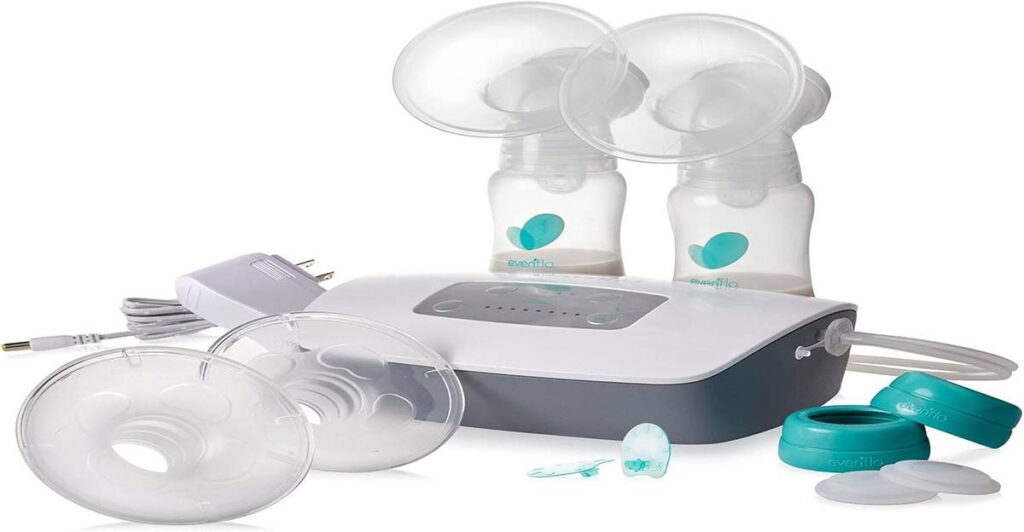
The Evenflo Advanced Double Electric Breast Pump is a budget-friendly, hospital-strength pump designed for everyday use, offering a balance of affordability and functionality. It features customizable speed (four levels) and suction (eight levels) controls, allowing users to mimic their baby’s nursing rhythm for efficient milk expression . The pump includes three flange sizes (24.5mm, 28mm, and 30.5mm) to enhance comfort and milk output, though some users report challenges with fit due to its larger default size . Its closed-system design prevents milk contamination in tubing, ensuring hygiene and ease of cleaning . Lightweight and portable, it supports multiple power options (AC adapter, AA batteries, and car adapter) for on-the-go flexibility, though battery life is limited .
Pros:
- Affordability: Often covered by insurance or priced under $160, making it accessible for budget-conscious users .
- Customizable Settings: Independent speed and suction adjustments (32 combinations) optimize comfort and milk output .
- Portability: Lightweight design (1.05 lbs) and battery operation enable use in diverse settings .
- Closed-System Hygiene: Reduces contamination risks and simplifies maintenance
Cons:
- lange Sizing Issues: Default flanges (30.5mm) are too large for many users, requiring adapters or aftermarket purchases for smaller sizes .
- Durability Concerns: Reports of motor breakdowns and flimsy construction over time .
- Noise and Suction Limitations: Louder than advertised (~70 dB) and inconsistent suction strength, particularly at higher settings .
- Battery Dependency: AA batteries drain quickly (4–5 sessions), limiting true portability
10. Bellababy Portable Electric Pump
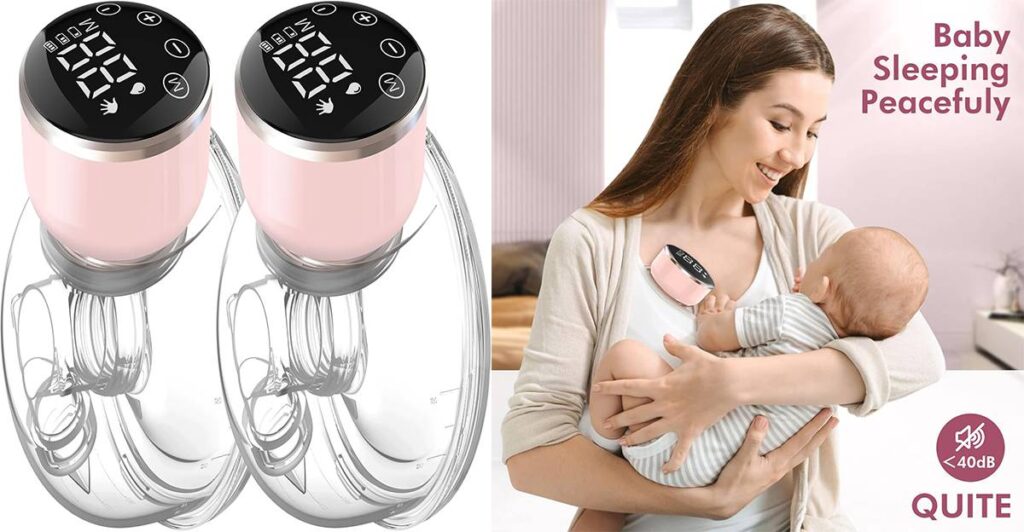
Wearable breast pumps are innovative, hands-free devices designed to fit discreetly inside a bra, allowing nursing parents to pump milk while multitasking or on the go. These cordless, rechargeable pumps eliminate the need for external tubing or bulky equipment, offering unparalleled mobility and discretion . Popularized for their convenience, they are ideal for busy lifestyles—whether returning to work, managing household tasks, or traveling—while maintaining breastfeeding goals . Unlike traditional electric pumps, wearables prioritize portability and quiet operation (~45–70 dB), making them suitable for public use . However, their compact design and lower suction strength compared to hospital-grade models raise considerations about long-term milk supply and efficiency
Pros:
- Portability & Hands-Free Use: Wearable pumps enable multitasking (e.g., cooking, working, or caring for other children) without being tethered to an outlet or stationary setup .
- Discretion: Their low-profile design fits under clothing, allowing discreet pumping in public or shared spaces .
- Ease of Cleaning: Simplified assembly with fewer parts (e.g., closed-system designs) reduces cleaning time and contamination risks
Cons:
- Lower Suction Strength: Most wearables offer 220–280 mmHg suction, weaker than hospital-grade pumps (300+ mmHg), potentially impacting milk supply for exclusive pumpers .
- Cost: High upfront prices (160–160–800) and recurring expenses (e.g., proprietary bags or parts) may strain budgets, with limited insurance coverage.
- Battery Limitations: Rechargeable batteries last 2–3 sessions, requiring frequent charging and limiting mobility for heavy users .
Final Tips: Choosing the right breast pump hinges on lifestyle, budget, and specific needs.
Hospital-grade pumps like Spectra S1 suit exclusive pumpers, while wearables like Willow Go offer mobility. Manual options like Haakaa are great supplements. Evaluate pros, cons, and personal priorities to find your perfect match.
